The 10th Global Interactive Forum on Traffic and Safety (GIFTS)
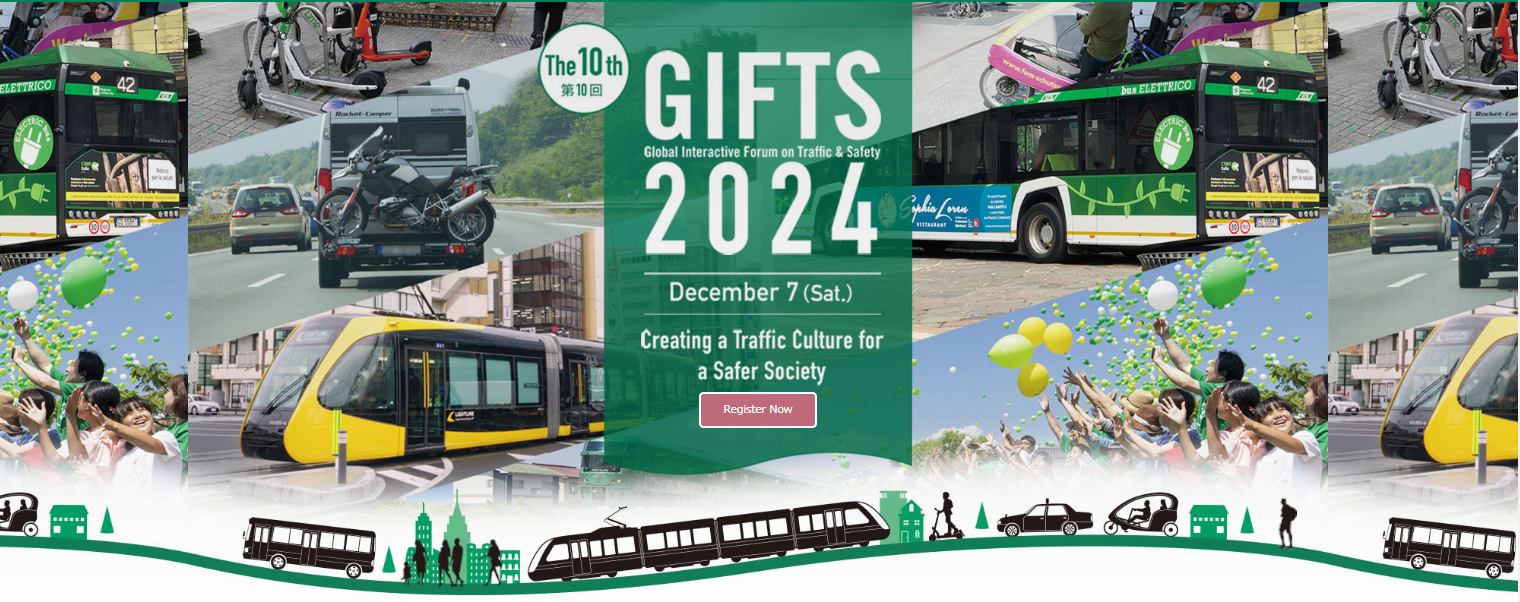
Outline of the Event
Opening Remarks
Prof. Kazuhiko Takeuchi
President, the IATSS
President, Institute for Global Environmental Strategies (IGES)
Project Professor, the University of Tokyo
Movie
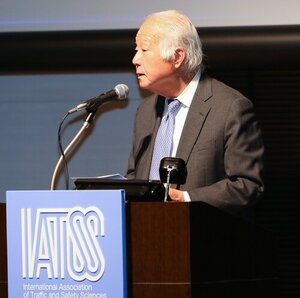
Professor Kazuhiko Takeuchi began his opening remarks by welcoming both in-person and online participants to the 10th Global Interactive Forum on Traffic and Safety (GIFTS) Symposium. International Association of Traffic and Safety Sciences (IATSS), established in 1974, has spent 50 years conducting research and surveys focused on traffic and safety to realize an ideal mobile society. The global traffic environment has experienced significant changes, requiring solutions that address not only traffic fatalities but also combine various fields including sustainable societies, well-being, and ICT-centered technological innovation. There is also growing recognition of the importance of considering traffic's role according to regional characteristics and diverse population backgrounds.
The association emphasizes a "transdisciplinary" approach in its activities, involving both traffic and safety experts as well as stakeholders from other fields. GIFTS, which began in 2015, has now reached its 10th event, coinciding with IATSS's 50th anniversary. As a high-level international platform, GIFTS aims to create effective proposals and standards that consider both universal aspects and regional differences, with discussions taking a medium to long-term perspective of 10 years.
The current GIFTS event focuses on "Creating a Traffic Culture for a Safer Society," exploring regional differences in traffic culture and developing implementable policy proposals. Additionally, IATSS recently announced its Vision 2024, a 10-year plan aiming to achieve a safe, sustainable, and positive mobility society that leaves no one behind by addressing issues such as serious traffic accidents, environmental impact, and ill-health while creating a positive cycle integrating mobility, sustainability, and well-being.
Keynote Speech1
Prof. Nicola Christie
Professor, Transport Safety at the Centre for Transport Studies, University College London
Oversees Fellow, the IATSS
Presentation Materials
Movie
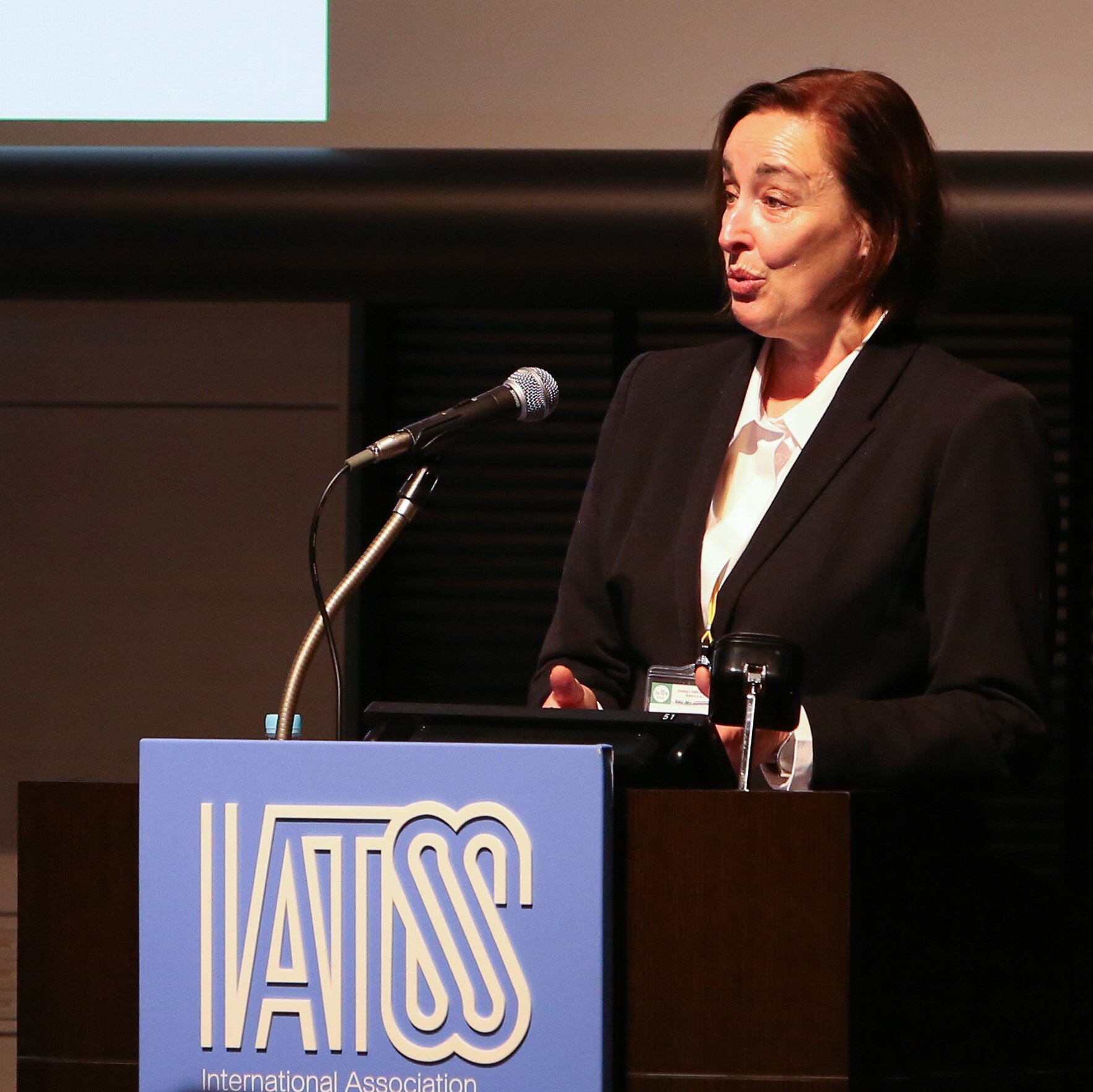
Professor Nicola Christie delivered a keynote speech on creating a traffic safety culture for a safer society, with a particular focus on the UK experience. She began by explaining that safety culture reflects how safety is managed in society, involving shared beliefs, attitudes, and values that can help reduce incident rates. She illustrated this through historical examples like the Deepwater Horizon and Titanic disasters, where poor safety culture contributed to catastrophic outcomes.
Click to view details
Professor Christie explained the maturity trajectory of safety culture, progressing from pathological ("Who cares as long as we're not caught") through reactive, calculative, and proactive stages, to ultimately reach a generative state where "safety is how we do business." She noted that while aviation demonstrates a generative approach, road safety often remains at the reactive stage, responding to events after they occur.
The key components of traffic safety culture were outlined, including leadership where leaders take clear actions, respect where individuals understand dangers, mindfulness in staying alert, and learning capacity to adapt to changes. These elements shape how individuals and groups approach road safety. The importance of this culture is reflected in reduced collisions, economic benefits through lower healthcare costs, and promotion of more responsible behavior.
Professor Christie highlighted the role of governance in successful road safety programs, using France as an example where political will under Jacques Chirac's leadership led to a 50% reduction in deaths by 2010 through implementing speed cameras, national safety councils, and probationary licenses. She emphasized that policies cannot simply be transferred between countries, as context matters significantly.
The UK's experience with various safety initiatives was detailed through several major programs. The drink driving initiative has spanned 50 years, utilizing enforcement, media campaigns, and rehabilitation programs, reducing alcohol-related road deaths from 26% to 15%. Mobile phone use restrictions were implemented with severe penalties, including license revocation for new drivers. The seat belt implementation process achieved 95% compliance through sustained efforts in legislation and awareness campaigns. Drug driving legislation was introduced in 2015 with zero tolerance for specific drugs.
Professor Christie then addressed emerging challenges to traffic safety culture. She discussed concerns about autonomous vehicle reliability and cyber security, the rise of micro-mobility solutions like e-scooters, and the impact of poverty on road crashes. Electric vehicles introduce new safety challenges due to their weight and quiet operation. The growth of the gig economy has created additional risks, with research showing app-based delivery riders more likely to engage in risky behaviors due to time pressures.
Professor Christie concluded with the fact that developing a traffic-safety culture is an ongoing process, requiring political will, research, monitoring, and multiple agency involvement. She presented the government's ROAMEF cycle as a framework for implementing and assessing interventions, stressing the importance of creating a generative road safety culture that requires participation from all stakeholders.
Keynote Speech 2
Ms. Claudia Adriazola-Steil
Deputy Director, Global Urban Mobility
Director, Global Health & Road Safety Program, World Resources Institute
Presentation Material
Movie
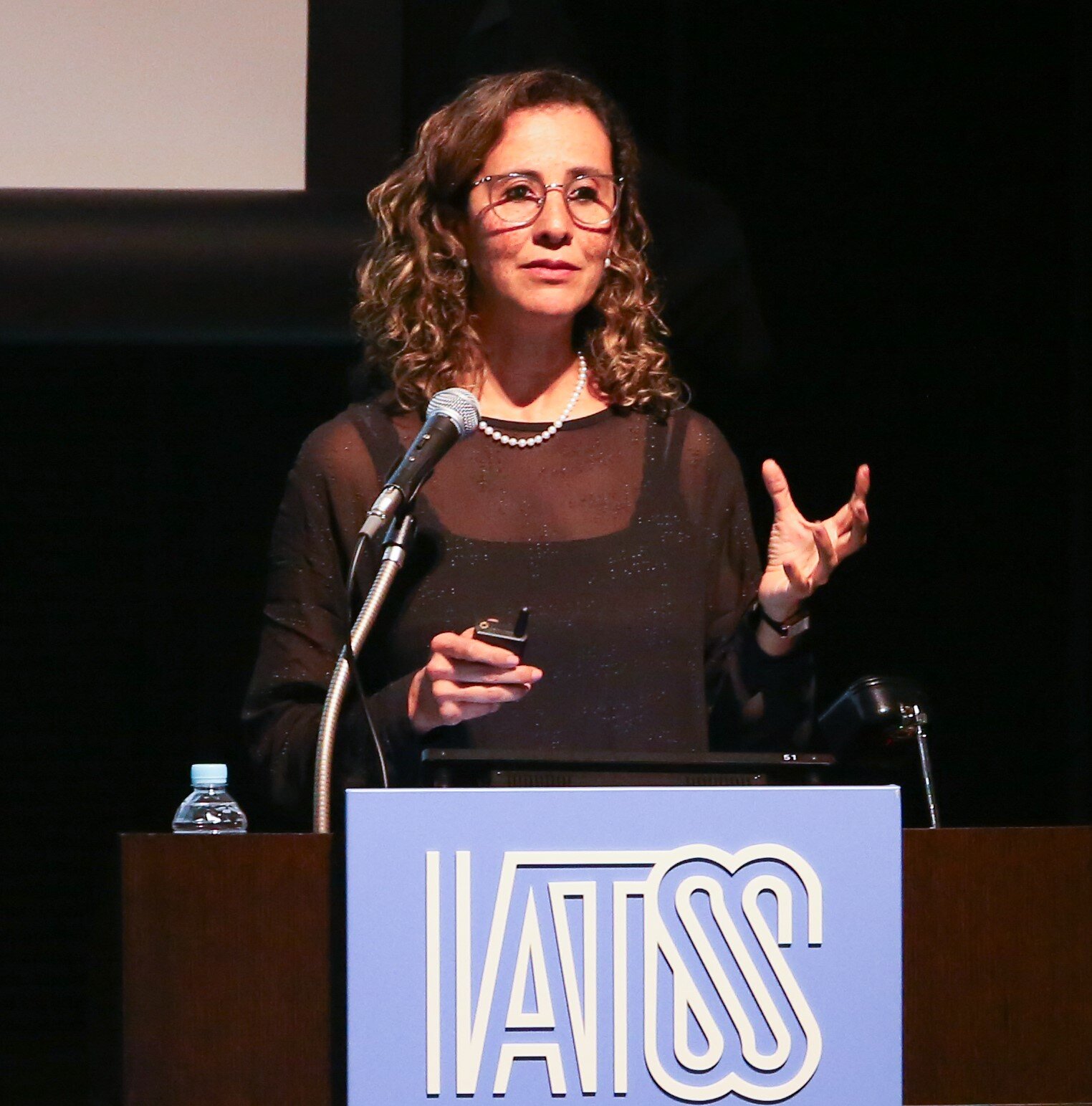
Ms. Claudia Adriazola-Steil delivered a keynote speech focusing on international road safety challenges, particularly in developing nations. She cited that 92% of traffic fatalities occur in low and middle-income countries, with road crashes being the leading cause of death for people aged 5-29 globally. The presentation focused on three critical areas: speed management, arterial roads, and motorcycle safety.
Click to view details
Using comparative analysis, she demonstrated how urban design impacts safety by contrasting Houston and Madrid, cities with similar populations but vastly different fatality rates (12.9 vs 2.2 per 100,000 people). These differences were attributed to their contrasting-built environments and transportation modes, with Madrid featuring more public transport and pedestrian-friendly infrastructure.
The speaker provided detailed analysis of arterial roads' dangers, using examples from multiple cities including Bogotá's Avenida Boyaca, where 51 fatalities and 1,295 serious injuries occurred in 2023 alone. She criticized the common practice of using highway design standards for urban roads, which prioritize vehicle speed over pedestrian safety and often lack adequate crossing infrastructure, particularly in lower-income areas.
Motorcycle safety was identified as a crucial concern, especially in developing nations. Research across six cities (Bogotá, Cali, Buenos Aires, Nairobi, Ghana, and Bangkok) revealed that 95% of trips in low-income households are made by motorcycles, often due to inadequate public transportation alternatives. The study found that wide roads with high speeds create dangerous conditions for motorcyclists, with young males aged 21-40 being the most affected group.
Ms. Adriazola-Steil addressed the economic impact of road safety, noting that traffic crashes can lead to GDP reductions of 7-22% according to World Bank analysis. She also connected road safety to climate change initiatives, arguing that safer streets are essential for achieving climate goals by enabling more sustainable transportation modes.
The presentation concluded with a success story from Victoria, Spain, where comprehensive urban redesign transformed the city from car-oriented (69% space for cars) to people-oriented (71% space for people) through integrated planning that included speed reduction, increased public transport, and enhanced pedestrian infrastructure. This example demonstrated how safety culture can be successfully changed through systematic, well-funded interventions with clear responsibilities and community support.
Introduction
Prof. Akihiro Nakamura
Member of the IATSS/Chairperson, GIFTS Executive Committee
Professor, Faculty of Economics, Chuo University
Movie
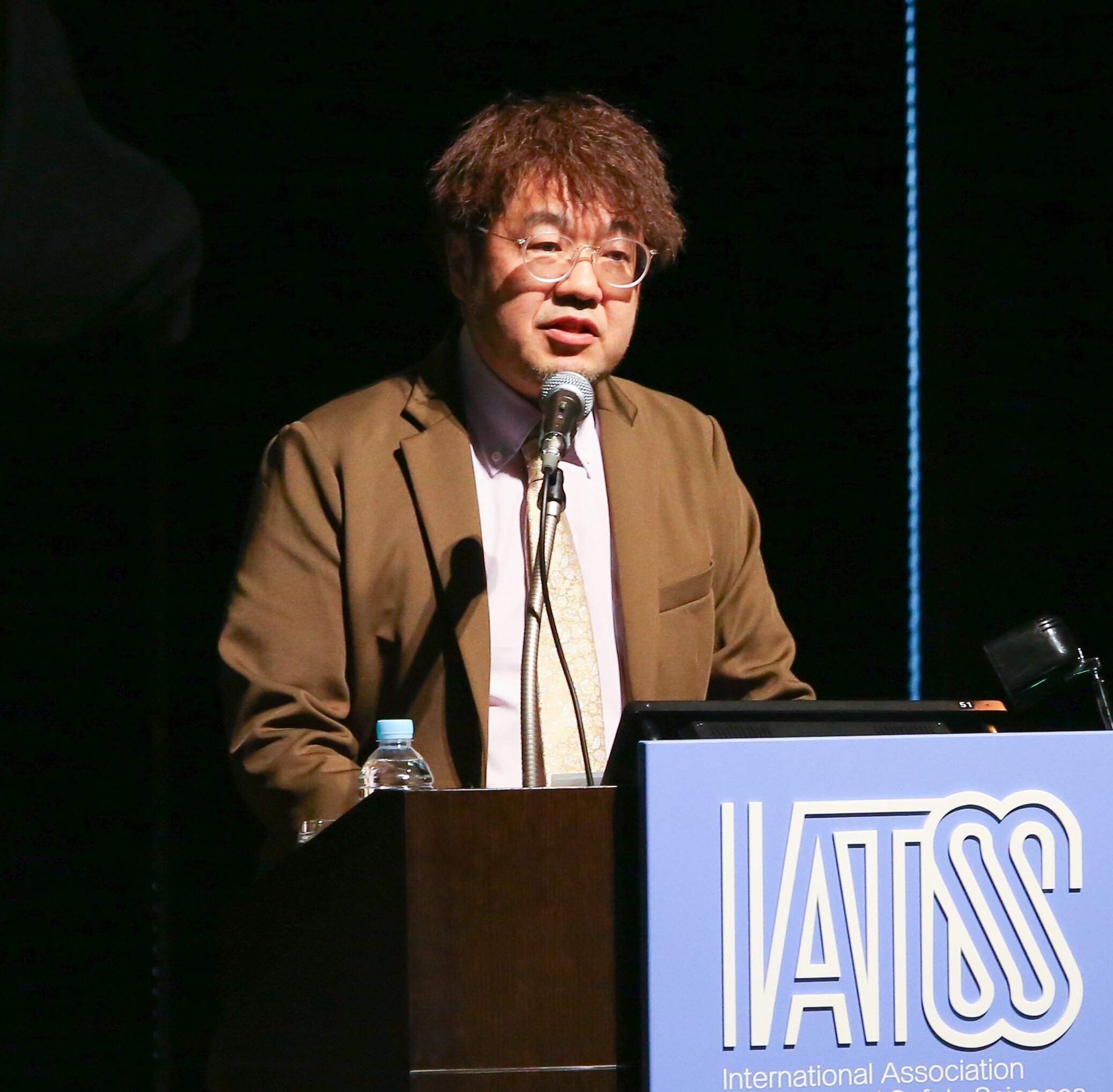
Professor Akihiro Nakamura, Chair of the Steering Committee, introduced the afternoon session of the forum. He outlined the two upcoming discussions: a panel on IATSS's Country Fact Survey examining regional safety measures and policies, and a workshop focused on implementing scientific findings into practical policy. The panel session would be moderated by Dr. Hideki Nakamura with four expert panelists, while Dr. Akinori Morimoto would lead the workshop session with speakers from ADB, JICA, and one of the morning's keynote speakers. Professor Nakamura highlighted that this forum both culminates a decade of work and launches future discussions on sustainable mobility.
Panel Discussion
- Coordinator
- Prof. Hideki Nakamura/
Member of the IATSS
Professor, Graduate School of Environmental Studies, Nagoya University - Panelist
- Ms. Susanna Zammataro
Director General, International Road Federation (IRF)
Dr. Wouter Van den Berghe
Director, Tilkon Research & Consulting
Dr. Ghassan Abu-Lebdeh
Associate Professor, Civil Engineering/Transportation, Marshall University in Huntington, West Virginia, USA
Dr. Azusa Toriumi
Research Associate, Department of Human and Social Systems of the Institute of Industrial Science, University of Tokyo
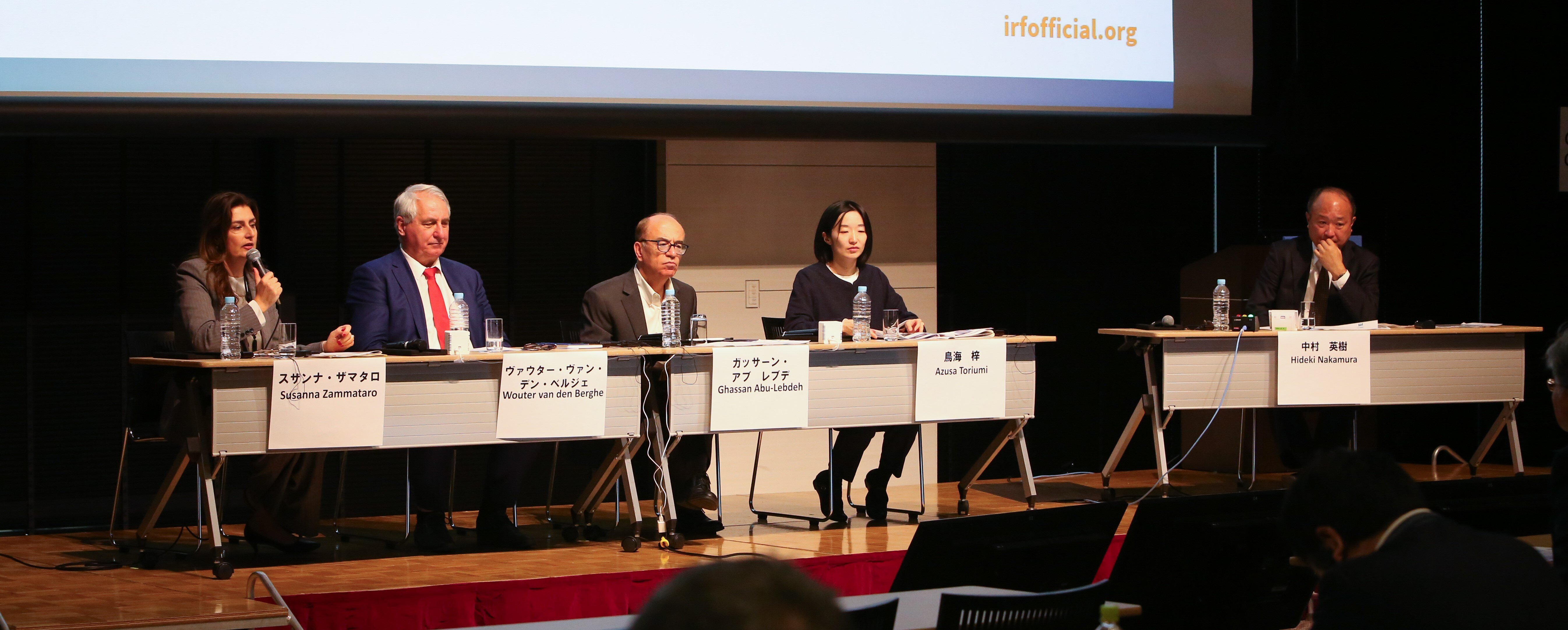
Professor Hideki Nakamura presented findings from IATSS's international collaborative research project examining how traffic safety culture affects crash risks across different regions. Using Structural Equation Model (SEM) and data from 48 countries, the study analyzed relationships between various factors including economy, climate, enforcement, education, and human behavior.
Click to view details
The research identified three distinct country groups based on their characteristics. The first group, termed "pre-motorization" countries, showed high motorcycle usage and fewer cars, with infrastructure development initially leading to increased fatalities. The second group, labeled "controlled safety" countries, demonstrated strong enforcement mechanisms and high motorization levels, with weather conditions significantly impacting safety outcomes. The third group, called "self-disciplined safety" countries, exhibited high motorization but less strict enforcement, with active transportation modes contributing to better safety records. The study revealed that while the Theory of Planned Behavior structure was common across all groups, each required different policy approaches. Pre-motorization countries need to focus on safety awareness and road quality rather than simple expansion. Controlled safety countries require motorcycle-oriented safety measures, while self-disciplined countries benefit most from developing walkable and bikeable cities to reduce car dependency. Climate conditions were found to have varying impacts, with less significance in pre-motorization countries but stronger effects in more developed regions, particularly regarding the use of active transportation modes. Professor Nakamura stated that comprehensive analysis provides evidence-based recommendations for tailoring road safety policies to different cultural and developmental contexts, stressing that a one-size-fits-all approach would be ineffective for improving global road safety. Dr. Azusa Toriumi presented findings from the Country Fact Survey (CFS), a collaborative study across nine countries examining road safety systems through national indicators. The survey complemented the SEM research by providing direct international comparisons of safety measures and policies. The study revealed significant variations in road development and motorization levels across countries. While some nations showed similar vehicle ownership rates, their dependence on private car use varied considerably. The research examined speed regulations, finding that most countries employ simple speed limit classifications that do not fully reflect the complexity of different road types. Analysis of speeding penalties showed wide variations in enforcement approaches, with fines varying significantly when normalized against national income levels. Enforcement strategies also differed notably between nations, with emerging countries often implementing stricter enforcement than developed ones, supporting the earlier distinction between "controlled safety" and "self-disciplined" approaches. The study also examined driver education through license renewal systems, finding that most countries have infrequent renewals (10-15 years) focused mainly on updating documentation rather than enhancing driver knowledge. Dr. Toriumi closed out her lecture noting that while existing international databases provide useful information, they often lack important qualitative data, particularly regarding driver education and other factors that resist quantitative measurement. The CFS's collaborative approach helped fill these gaps and provided crucial context for understanding different national approaches to road safety.
Short Presentations by panelists - round 1
Each panelist presented their perspective on local issues and initiatives.Click to view details
Short Presentation 1-1
Dr. Toriumi presented an analysis of traffic safety evolution in Japan and broader Asian trends. She traced Japan's journey from 1960s motorization to its current "self-disciplined safety" culture, achieved through comprehensive improvements in infrastructure, legislation, and education.
Japan now faces two primary challenges: adapting to a super-aging society and transitioning from car-oriented to car-free infrastructure. With elderly people accounting for a high proportion of traffic fatalities, Japan is considering solutions like conditional licenses and improved suburban accessibility. The country is also implementing "Zone 30 plus" areas and revising speed limits to better reflect road functions.
Examining broader Asian trends, Dr. Toriumi noted that many countries remain in emerging stages with increasing motorization, particularly struggling with motorcycle usage and mixed traffic conditions. These nations, fitting into "controlled safety" or "pre-motorization" categories, face the question of whether they must follow traditional development paths or can implement more efficient strategies based on current knowledge. She emphasized the need for comprehensive safety programs that balance economic development with pedestrian safety, noting that many road users in developing nations remain unaware of risky behaviors.
Short Presentation 1-2
Dr. Ghassan Abu-Lebdeh presented an analysis of traffic safety in the United Arab Emirates (UAE), focusing on its unique position among Arab nations, particularly Gulf Cooperation Council countries. He described the UAE's dramatic transformation over three decades, marked by exceptional population growth and urbanization, with 88-90% of residents being expatriates from diverse cultural backgrounds, primarily from the Indian subcontinent and other Asian countries. This demographic composition, combined with high living standards and significant disposable income among nationals, has created distinctive transportation challenges.
The UAE has invested heavily in modern transportation infrastructure, including roadways, metro lines, and rail systems, while implementing stringent traffic laws that can include deportation for violations. Despite technological advancement and effective enforcement leading to reduced fatalities, the country faces unique "soft" challenges stemming from its cultural diversity. A key issue is the varied understanding of road safety among drivers from different backgrounds, many of whom may not understand Arabic or English road signs. This diversity impacts infrastructure operation, with traffic signals often running in conservative modes to accommodate varying levels of understanding.
Dr. Abu-Lebdeh pointed out that while progress has been made in reducing traffic fatalities, significant barriers remain, including limited data availability due to privacy concerns and confidentiality requirements. There is a need for a more comprehensive systems approach to safety and technological solutions alone cannot address all challenges in such a culturally diverse environment. The UAE's case demonstrates how rapid development and cultural diversity can create unique road safety challenges that require tailored solutions beyond traditional infrastructure and enforcement approaches.
Short Presentation 1-3
Dr. Wouter Van den Berghe presented an analysis of how national cultures influence traffic safety, focusing on measurement and cultural dimensions. He explained that national cultures can be mapped along two main dimensions: independent and confucianist, with countries clustering by geographic regions that reflect similar cultural characteristics. This mapping correlates with traffic fatality rates, showing significant variations between regions like Sub-Saharan Africa and Nordic Europe.
He emphasized the distinction between different levels of culture: national/community level and organizational/corporate level. While related, these require different approaches for improvement. The research showed that resistance to road safety measures varies significantly across cultures, with factors like "limitation of freedom" carrying different weights in different countries (e.g., less important in China than in California).
Dr. Van den Berghe outlined four progressive levels of individual safety awareness: basic understanding of unsafe behavior consequences, accepting current situations as intolerable, willingness to comply and support safety measures, and actively influencing others' behavior. He categorized improvement mechanisms as either "hard" (tangible regulations and restrictions) or "soft" (education, training, campaigns). His conclusions stressed that traffic safety culture is influenced by both national culture and corporate safety culture, requiring a combination of hard and soft measures for effective improvement, with employers potentially playing a larger role in promoting safety culture.
Short Presentation 1-4
Ms. Susanna Zammataro, representing the International Road Federation (IRF), presented insights from her organization's global perspective across 130 countries. She began with a case study of a modern intersection in Asia that, despite good infrastructure, demonstrated multiple safety issues - from cars occupying cycle lanes to dangerous pedestrian crossing patterns - to illustrate how safety problems stem from systemic issues rather than just user behavior.
Road safety challenges arise from multiple interconnected factors: outdated geometric design standards, lack of mandatory safety audits, insufficient policy implementation, and inadequate consideration of non-motorized users. The IRF addresses these challenges through various initiatives, including policy recommendations, design standard reforms in Central Asia and Africa, and the creation of an international registry for road safety auditors.
Ms. Zammataro highlighted the importance of qualified professionals in road safety, explaining that audits should be conducted by teams including various experts, not just engineers, to account for cultural and psychological factors. She stressed that measuring and understanding data is crucial for identifying problems and implementing effective solutions, with partnerships being fundamental to comprehensive safety improvements.
Short Presentations by panelists - round 2
Click to view details
Short Presentation 2-1
Dr. Van den Berghe started the second round of short presentations by exploring how traffic safety culture both influences and is influenced by various societal factors. Social norms were elaborated on through examples like differing cultural responses to drunk driving and presented research showing strong correlations (0.7) between national culture and fatality rates, particularly relating to independence levels in societies.
He explained the complex relationship between culture and human development, noting that as countries develop economically, their cultural characteristics tend to shift, particularly along the independence dimension. This development typically brings both cultural changes favorable to road safety and increased resources for safety infrastructure, making it difficult to separate cultural from economic effects.
The research revealed contradictory relationships between culture and safety measures. For example, more individualistic societies often show stronger opposition to speed restrictions, yet these are the same countries that typically implement such measures due to political will and available resources. He cited the varying acceptance of Intelligent Speed Assistance (ISA) across European countries as an example of how safety culture influences receptiveness to new measures.
Dr. Van den Berghe concluded by addressing European priorities in road safety, including urban speed reduction, technology-based enforcement, and the challenges of balancing sustainable mobility with safety concerns, such as promoting cycling while managing increased injury risks. He emphasized the need for international consensus on measuring traffic safety culture, noting upcoming European projects aimed at developing standardized measurement systems.
Short Presentation 2-2
Dr. Toriumi explored how Japan's mature traffic safety culture developed through historical experiences and national cultural characteristics. She explained that Japan's traditional importance placed on group harmony and consideration for others contributed significantly to achieving higher safety levels. This cultural foundation is reinforced through early education, with elementary school children walking to school independently while supported by voluntary community safety patrols.
She presented a case study of changing traffic culture regarding pedestrian priority at unsignalized crosswalks. Through combined approaches including public relations, enforcement, and infrastructure design changes, Japan has seen increased driver compliance with pedestrian crossing rights over the past decade.
Examining broader Asian contexts, Dr. Toriumi mentioned two distinct cultural aspects affecting safety: locally adapted transport modes (such as tuk-tuks and jeepneys) and streets as spaces for social activities. While these cultural elements provide important social and economic benefits, they present safety challenges. Rather than eliminating these cultural practices, she pushed the need to integrate them safely into modern transportation systems. She noted how Japan's own experience of removing street activities for automobile infrastructure, and subsequent regret over lost cultural vitality, offers lessons for balancing safety with cultural preservation in developing Asian cities.
Short Presentation 2-3
Dr. Abu-Lebdeh focused on how the UAE's unique cultural composition affects road safety behavior. He highlighted the distinct patterns between UAE nationals (particularly younger drivers) who are disproportionately involved in risky driving and fatal crashes, and the diverse expatriate population who show higher involvement in pedestrian and cyclist accidents.
He proposed targeted approaches for each group: for UAE nationals, leveraging their small, uniform, tribal community structure to influence safer behavior, particularly among young drivers. For the larger expatriate population, he suggested focusing on civic engagement rather than punitive measures, acknowledging their diverse cultural backgrounds while building common safety practices. Dr. Abu-Lebdeh stated that recognizing and addressing these cultural differences is crucial for developing effective safety interventions in the UAE's multicultural context.
Short Presentation 2-4
Ms. Zammataro presented a case study of Italy's road safety culture, using her native country to illustrate common safety challenges found worldwide. She emphasized the cultural differences between northern and southern Italy, which reflect broader patterns in safety behavior and attitudes.
She identified several key cultural challenges in Italy: widespread distracted driving (linked to social customs of frequent family communication), lack of respect for pedestrians and cyclists (exemplified by Milan's experience where improved infrastructure alone failed to prevent cycling fatalities), and attitudes toward speeding (with half of surveyed drivers believing expert drivers can safely speed). Despite Italy's status as a founding EU member, these cultural factors continue to impede safety improvements, even affecting basic measures like seatbelt compliance.
Ms. Zammataro highlighted emerging challenges with micro-mobility, presenting data showing that 93% of related crashes involve single riders, often young people at night after drinking. She noted that Europe already has 20 million e-scooter users, with the micro-mobility market projected to reach 100 billion by 2030. While this trend offers sustainability benefits, there is still a need to address safety concerns through infrastructure improvements and speed management, particularly in areas where vehicles interact with pedestrians and cyclists.
Discussion Conclusion
Professor Nakamura asked Dr. Van den Berghe how to analyze traffic safety cultures as they change over time, using Japan's evolution from its "traffic war" period as context.Dr. Van den Berghe responded by accentuating the need for standardized measurements of traffic safety culture. He noted that while countries like Japan and Nordic nations have strong safety cultures, they lack metrics to quantify their success or identify areas for improvement. He stressed that traffic safety culture encompasses not just behavior but also actions and implementation effectiveness, citing how some low and middle-income countries have excellent policies on paper but struggle with implementation. This suggests the need for comprehensive measurement systems that can track both policy development and practical execution over time.
Click to view details
Professor Nakamura then asked Ms. Zammataro to comment on Dr. Ghassan Abu-Lebdeh's presentation about diverse populations in Arab rural nations.
Ms. Zammataro emphasized the importance of considering religious and traditional factors in road safety, noting how these influence mobility patterns (such as restrictions on women driving in some regions). She stressed the need for disaggregated data to better understand these cultural impacts. Using Milan as an example, she highlighted how well-intentioned policies can have unintended consequences in complex systems, citing how promoting cycling without considering existing cultural attitudes led to increased fatalities. She concluded advocating the importance of systems thinking when implementing safety policies.
Professor Nakamura finally asked for final comments, and Dr. Ghassan Abu-Lebdeh briefly explained that while various factors influence unsafe practices, culture and religion are interconnected and must be addressed sensitively and appropriately when developing safety measures.
Professor Nakamura thanked the panelists and the audience members and closed the panel session.
Workshop
- Moderator
- Prof. Akinori Morimoto
Member of the IATSS
Professor, City and Transportation Planning at Department of Civil and Environment Engineering - Presenters
- Ms. Claudia Adriazola-Steil
Deputy Director, Global Urban Mobility
Director, Global Health & Road Safety Program, World Resources Institute
Dr. Michael Anyala
Senior Transport Specialist (Road Asset Management), Asian Development Bank
Mr. Yasuhiro Suhara
Director, Team 1, Transportation Group, Infrastructure Management Department, Japan International Cooperation Agency (JICA)

Prof. Akinori Morimoto
Professor Akinori Morimoto began the afternoon workshop session which focused on connecting, collecting, and communicating for civil societies, stemming from the Global Research Alliance on Traffic and Safety (GRATS) international collaboration project launched in 2022. The initiative builds upon the Global Interactive Forum on Traffic and Safety (2021), which established the vision of creating a safer traffic society where no one is left behind.
The workshop would explore three specific areas: information sharing with international organizations, construction of low traffic safety city databases, and human resources development. Professor Morimoto highlighted Japan's Fundamental Traffic Safety Program, which aims to achieve the world's safest traffic conditions with targets aligned to global plans for 50% fatality reduction by 2030. He outlined Japan's evolution in traffic safety over 60-70 years, progressing from technological solutions to systemic and cultural changes.
Click to view details
The initiative includes a two-year effort to collect city-level safety data, recognizing the importance of location-specific solutions. Additionally, a human resources development program, established in 1983 through Honda's collaboration, brings 20 international professionals to Japan twice yearly. A new program was recently launched, expanding beyond traffic safety to include public transportation studies and exposure to latest technologies.Dr. Michael Anyala
Dr. Michael Anyala, representing the Asian Development Bank (ADB), presented on data-driven road safety investments. He emphasized road safety as a critical development issue, noting that the Asia-Pacific region loses 3-5% of GDP annually due to road deaths and injuries. His analysis of WHO data from 2010-2021 showed that countries with effective governance typically demonstrate better road safety outcomes, particularly among high-income nations like Japan, Korea, Australia, and Singapore. A key challenge is helping emerging economies achieve similar safety standards by 2030.
He highlighted that addressing road safety requires only 3% of the region's current infrastructure investments (from the total 550 billion invested annually), though there remains a disconnect between safety solutions and cost distribution, with much of the burden falling on healthcare, businesses, and families. To address this, ADB established the Asia Pacific Road Safety Observatory (APRSO) in 2020, now comprising 27 member countries including high-income nations like New Zealand and Australia, to connect stakeholders and support data-informed policy decisions.
The ADB is actively working on several initiatives, including monitoring UN safety performance indicators. One goal is to ensure that by 2030, more than 75% of travel on existing roads meets technical standards for all users. There are also developing an AI-based system to monitor motorcycle helmet wearing rates, targeting 100% compliance by 2030, which helps identify areas needing targeted enforcement and intervention.
Dr. Anyala showcased the Shaanxi Road Safety Demonstration Project in China as a successful example, which achieved significant reductions in deaths and injuries through improved road design and professional training. The project, valued at 300 million and recognized with an IRF award, utilized the National Road Safety Assessment Program to measure and improve safety ratings. The project demonstrated how proactive design methods can enhance road safety even without extensive crash data, and its success has led to replication across other countries despite initial resistance from engineers.
Mr. Yasuhiro Suhara
Mr. Yasuhiro Suhara, representing the Japan International Cooperation Agency (JICA), presented on their organization's traffic safety initiatives. JICA, an administrative agency under the Japanese government, operates in 150 countries with 96 overseas offices, focusing primarily on Southeast and South Asia. The organization employs three main schemes: technical cooperation through expert dispatch and training programs, grant aid for construction and equipment, and loans for larger projects.
While JICA has historically implemented infrastructure projects like flyovers and intersection improvements primarily targeting urban congestion, these initiatives have indirectly contributed to road safety. The organization has also invested significantly in public transportation, recognizing that modal shift from private vehicles to public transit helps reduce traffic accidents. Dedicated traffic safety projects are relatively recent, beginning with a project in Bethlehem (2006-2014), and have expanded to Thailand, Cambodia, Bangladesh, Uzbekistan, with upcoming projects in Kenya and Tanzania.
Mr. Suhara detailed a current technical cooperation project with Bangladesh's Metropolitan Police as an example. The project focuses on three main areas: accident data analysis, traffic safety education, and enforcement regulations. Specific initiatives include improving bus stop usage, installing pedestrian signals near hospitals, and conducting children's safety campaigns. The project also facilitates knowledge exchange, with Bangladesh police officers visiting Japan to study successful programs like community-supported school commuting safety systems.
JICA's traffic safety strategy follows a 4E approach (Enforcement, Engineering, Education, and Emergency), with particular importance on data collection, analysis, and enforcement capacity building. While there have achieved significant outputs, Mr. Suhara noted challenges including limited availability of experienced Japanese experts in police and emergency services, budget constraints, and difficulties in scaling successful pilot programs nationwide. Their educational initiatives primarily target schoolchildren rather than drivers, acknowledging the need to focus resources effectively within their operational constraints.
Ms. Claudia Adriazola-Steil
「Ms. Adriazola-Steil presented on the interconnected themes of connecting, collecting, and communicating in road safety. Road safety is a complex issue involving multiple stakeholders: international agencies, national governments across various sectors, local governments, civil society, private sector, financial organizations, and academia. She noted that road safety impacts eight sustainable development goals, with 92% of traffic-related deaths occurring in developing countries.
She underscored the World Resources Institute's systemic approach, explaining how reducing crashes and fatalities creates a safer environment that encourages walking, cycling, and public transportation use, ultimately reducing emissions and pollution. Ms. Adriazola-Steil stressed the importance of strong performance indicators in investments, citing examples of infrastructure projects that resulted in increased fatalities, such as Nairobi's outer ring road which claims 40-50 lives annually.
Regarding data collection, she pointed out its critical role in both identifying problems and building compelling narratives to prioritize road safety initiatives. She shared examples including Boulder's speed management program and motorcycle safety research across Asia, Latin America, and Africa. The data helped develop targeted solutions and informed policy decisions.
On communication, Ms. Adriazola-Steil shared another powerful example from Boulder, where a newly finished avenue resulted in 24 fatalities and 913 injuries, including the death of a 65-year-old woman who had previously expressed safety concerns to the mayor. This led to the installation of speed humps, after which fatalities ceased. She stressed the importance of engaging with communities, responding to societal concerns, and effectively communicating with political leaders to prioritize road safety initiatives, noting that practitioners must be resilient and prepared with various arguments to make their case to decision-makers.
Discussion 1
Click to view details
Professor Akinori opened the discussion period by acknowledging the previous presentations' key points about complex issues, SDGs, and the high proportion (92%) of traffic accidents in developing countries. He structured the discussion around three topics, beginning with information sharing among international organizations.
Mr. Suhara was the first to respond, expressing strong support for information sharing. He referenced his attendance at the APRSO meeting in Tokyo last October, noting that given JICA's relatively short history with traffic safety projects, such information sharing platforms are valuable for collecting insights and lessons learned to improve their projects.
Professor Morimoto followed up by sharing his own experience with APRSO as a member of the international organization, emphasizing the importance of data-driven analysis in finding solutions. He then invited Dr. Anyala to contribute to the discussion.
Dr. Anyala expanded on the information sharing topic, mentioning that there is a critical need for cooperation in data sharing, particularly to help emerging economies achieve safety standards comparable to high-income countries. He then talked about the APRSO and how they work with member countries to collect and share specific indicators, though noting that some governments remain protective of their information. Member countries must agree upfront to data sharing when joining the observatory.
He also highlighted the Asia Transport Outlook (ATO), a complementary resource that aggregates road safety data from secondary sources including World Road Statistics (WRS). This platform includes national and city databases across all transport modes, serving as a comprehensive information source for the Asia-Pacific region.
Professor Morimoto agreed with Dr. Anyala's emphasis on data-driven solutions, reiterating that data collection is the foundation for analysis and solution development. He then invited Ms. Adriazola-Steil to share her perspectives on the discussion.
Ms. Adriazola-Steil expanded on the information sharing discussion by stressing its role in aligning stakeholders toward a safe system approach. She stressed the importance of sharing successful examples and their underlying factors, noting that benchmarking and healthy competition can motivate progress. She drew a parallel between road safety professionals and doctors, emphasizing their shared responsibility for saving lives. She proposed a straightforward metric: whether investments and maintenance are reducing or increasing fatalities and highlighted the role of innovation in international collaboration.
Discussion 2
Click to view details
Professor Morimoto acknowledged these points about data and technology sharing, particularly their role in societal advancement. He then transitioned the discussion to the second topic concerning road traffic database construction, referencing Dr. Anyala's earlier points about data sharing importance. He invited comments on how to overcome obstacles in database collection and cooperation.
Dr. Anyala addressed the challenges of crash database construction in emerging economies, sharing that police-collected data often prioritizes crime-solving over comprehensive traffic safety information. He drew attention to the varying definitions of road deaths across countries and described efforts in places like Mongolia to triangulate data from multiple sources -- police, insurance companies, and hospitals -- to build a more accurate picture. Through the observatory, there are working with countries to establish and improve these databases.
Ms. Adriazola-Steil added that trust is fundamental to data sharing, sharing an experience with Mexico where building relationships through a study tour to New York City led to breakthrough access to data. She stressed the importance of helping stakeholders understand how their data will be used and ensuring they see the impact of their contributions in preventing fatalities. She also noted the need to acknowledge the additional workload data collection places on police and medical workers.
Professor Morimoto reflected on how trust and accountability in data sharing must be built gradually through consistent communication and relationship building. He referenced past successful collaborations between JICA and IATSS that provided valuable data for new analysis by his laboratory students.
Mr. Suhara further addressed the challenge of data sharing, particularly regarding police-owned accident data. He suggested that while sharing complete traffic accident data is difficult due to privacy concerns, specifying which indicators can be shared openly versus kept confidential could help accelerate data sharing initiatives.
Discussion 3
Click to view details
The discussion then shifted to the final topic of sustainable human resource development in education. Mr. Suhara elaborated on JICA's perspective, noting that while they primarily focus on government personnel training, academic development in each country is crucial. He stated that since traffic safety often is not a high priority for politicians, building capacity among researchers and professors who can influence government officials becomes particularly important. He expressed hope for increased joint activities and capacity building for researchers in developing countries, acknowledging that while this falls somewhat outside JICA's direct mandate of training government personnel, it represents an important opportunity for collaboration with organizations like IATSS.
Professor Morimoto acknowledged Mr. Suhara's points about academic collaboration as a task for IATSS to address, emphasizing the need for future collaboration.
Ms. Adriazola-Steil provided comprehensive insights on human resources development, identifying three critical focus areas: traditional road user education to ensure competent system users, professional education for designers, engineers, architects, decision-makers, and economists in building safe transport systems that protect life while reducing emissions and promoting equity, and behavioral science to understand and facilitate behavioral shifts. She noted that university curricula and current systems often lack these crucial elements, particularly in professional education, which has resulted in the perpetuation of decades-old building practices.
Professor Morimoto acknowledged the importance of the three factors mentioned by Ms. Adriazola-Steil: user education, planner/political decision maker training, and behavioral change. He connected these to Professor Hideki Nakamura's research on behavior control and traffic culture change.
Dr. Anyala highlighted the future transformation of transport systems, expressing the need to consider decarbonization, micro-mobility, e-vehicles, and autonomous/connected vehicles in human resource development. He stressed that current infrastructure investments must account for future needs, as they will impact safety and mobility for years to come. He expressed ADB's interest in collaborating with academia and research institutions to help developing countries embrace these innovations and establish appropriate policies.
Professor Morimoto expanded on the future transportation systems discussion, noting the gradual global adoption of autonomous vehicles, particularly in the US and China. He referenced Japan's social experiments with Level 4 autonomous vehicles (no driver systems) and acknowledged the complexity of integrating these with conventional vehicles. He concluded by opening the floor for questions from participants.
Q&A
Click to view details
A participant raised a question about the challenges of international benchmarking, specifically regarding the lack of homogeneous data across countries and cities. They discussed how different regions might define crashes differently -- some counting only incidents with human casualties, others including property damage -- and asked how organizations like the ADB can ensure standardized data collection across countries.
Dr. Anyala responded by acknowledging the challenges but argued that waiting for perfect data should not prevent benchmarking efforts. He detailed how the ADB is addressing this issue, particularly in demonstrating the economic benefits of road safety investments, which is important for their charter and for convincing finance ministries to support projects. He described an ongoing initiative among Multilateral Development Banks (MDBs) to develop a consistent methodology for economic appraisal, mentioning the upcoming Highway Development Management Systems 5 (HDM5) tool, set to launch in 2025.
Dr. Anyala further explained their approach to data standardization, describing efforts to collect data at regional levels to create common datasets for project teams. He noted that while teams can use different data sources, they must justify deviations from the standard dataset. He compared this to the WHO's modeling-based approach, acknowledging that while neither system is perfect, they provide a consistent framework for measuring and comparing projects and country performance.
Ms. Adriazola-Steil followed up noting that "perfect is the enemy of the good." by Voltaire. She explained that while situations in developing countries are complex, focusing on just two fundamental metrics -- fatalities and serious injuries -- can drive meaningful progress. She added that more refined indicators for comparison could be developed over time but noted the immediate value of these basic measurements.
Another participant then asked Dr. Anyala about the challenges of obtaining and validating data from developing countries, noting discrepancies between different organizations' statistics and missing data issues.
Dr. Anyala explained their shift toward focusing on measurable risk factors using big data sources. He described how speed data can be obtained from platforms like Google and TomTom without government involvement. He also detailed their collaboration with the International Road Assessment Program (iRAP), which uses a risk-based proactive approach to rate road safety quality. He explained how ADB has helped establish country-specific programs like ChinaRAP and PakistanRAP to implement this methodology.
He then acknowledged current limitations, particularly the time-consuming nature of iRAP data coding, but highlighted ongoing innovations such as an artificial intelligence approach to star rating that there are preparing to pilot. He pushed the need to balance innovative data collection methods while continuing to support countries in improving their crash data collection systems for better policy decisions.
The participant then asked a second question to Mr. Suhara about the challenges of implementing traffic safety education in Bangladesh, particularly regarding costs and difficulties in educating drivers and students.
Mr. Suhara shared his personal perspective, noting that while the basic content of traffic safety education for children is similar between Japan and Bangladesh, adaptation to Bangladesh's cultural context presents certain challenges. He identified two main difficulties: the large scale of the target audience and ensuring program sustainability. He explained that JICA's approach involves training police officers to serve as traffic safety teachers, but this faces challenges when trained officers are reassigned to different positions or locations, particularly given current political issues in Bangladesh.
Mr. Suhara added that establishing a sustainable mechanism for maintaining a consistent pool of trained teachers remains one of their most significant challenges, not only in Bangladesh but in other countries as well.
Professor Morimoto brought the workshop to a close by referencing IATSS common goal of realizing a safe, sustainable, and positive mobility society where no one is left behind. He presented a figure illustrating three key topics -- sustainability, mobility, and well-being -- and the workshop's focus on the three C's: collecting, connecting, and communicating. The panelists then offered their final reflections.
Workshop Conclusion
Ms. Adriazola-Steil reiterated the interdependent nature of road safety issues and the importance of stakeholder collaboration, praising the intertwined nature of the presented graphic. She stressed the importance of incorporating sustainability and equity into their work.
Dr. Anyala highlighted the alignment of these concepts with future trends, emphasizing the need to connect road safety with sustainable development and climate change agendas, both for effectiveness and funding purposes. He advocated for breaking down silos between professionals.
Mr. Suhara endorsed the summary, advocating that achieving traffic safety goals requires collaboration across multiple organizations, including international partners, private companies, and NGOs, as no single organization can achieve these goals alone.
Professor Morimoto concluded by acknowledging the breadth of issues discussed and emphasizing their common vision of traffic safety and sustainable society. He highlighted the possibility of creating better traffic culture through continued collaboration and communication, thanking participants for their engagement in the workshop.
Summary of the 50th Anniversary
Prof. Fumihiko Nakamura
Member of the IATSS
Chairperson, IATSS the 50th Anniversary Strategy Board
Project Professor, Graduate School of Frontier Sciences, The University of Tokyo
Director of Sustainable Mobility Research Center
Movie
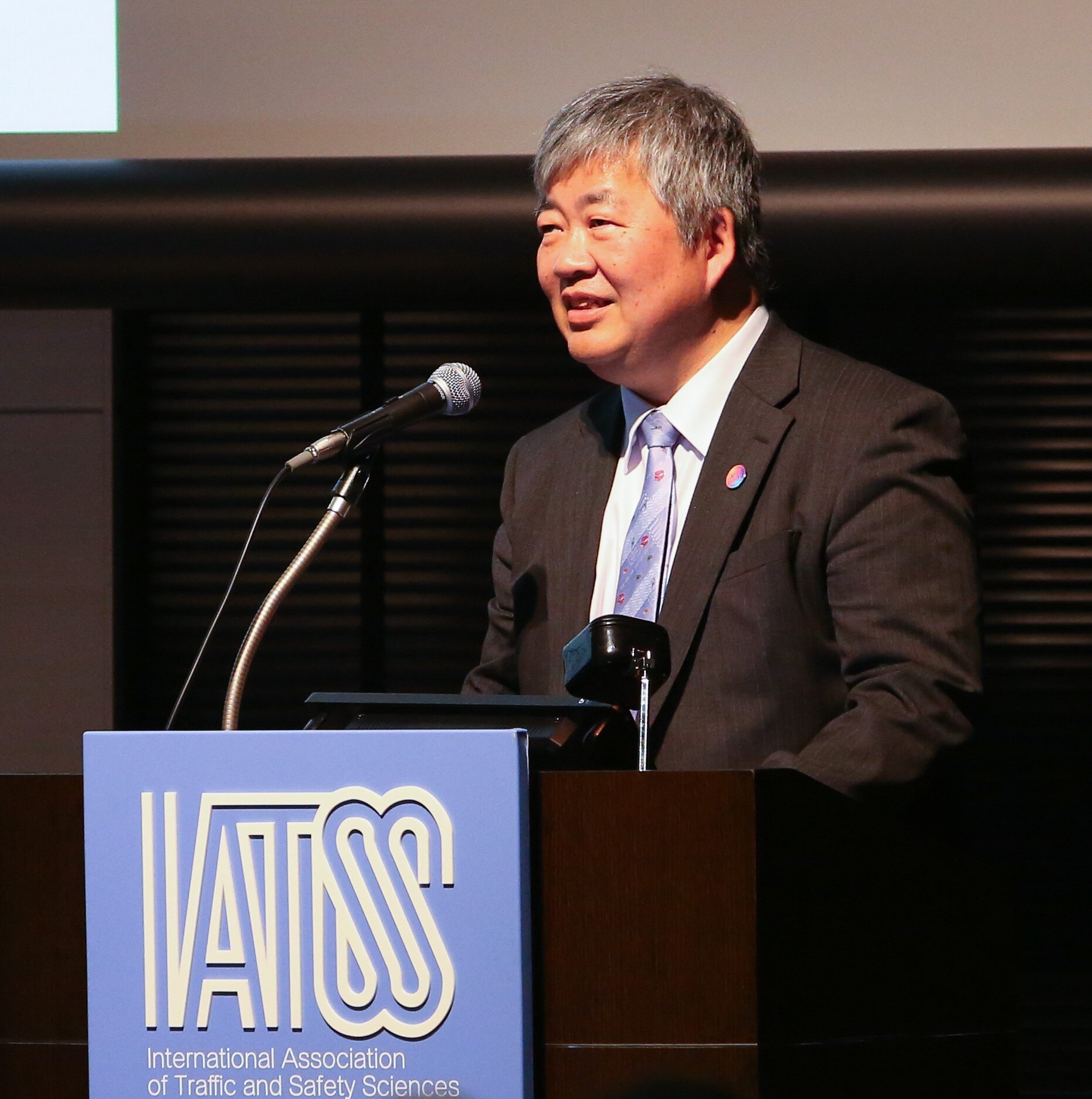
Professor Fumihiko Nakamura, chair of the 50th Anniversary Strategy Board, reflected on IATSS's 50-year history and evolution. Founded in 1974, IATSS has maintained a unique position through its interdisciplinary and international approach. He stressed the organization's development of IATSS VISION following the 2011 Great East Japan Earthquake, which focused on international and interdisciplinary collaboration.
He reviewed the ten years of GIFTS, noting how it has explored various cultural perspectives in creating safer societies. The recent adoption of hybrid meeting formats has enabled broader global participation. He then introduced IATSS's new Vision, announced by President Kazuhiko Takeuchi in September 2024, which focuses on three key elements: mobility (eliminating traffic fatalities to enable safer movement), sustainability (reducing environmental impact while addressing social and economic challenges), and wellbeing (improving individual and societal health through better transportation systems).
Professor Nakamura noted that while "culture" is not explicitly mentioned in the new vision, cultural perspectives remain crucial for understanding regional differences and facilitating interdisciplinary collaboration. He concluded by expressing confidence in IATSS's future activities and their continued contribution to realizing an ideal transportation society.
Closing Remarks
Mr. Nobuyuki Kawai
Executive Director, the IATSS
Movie
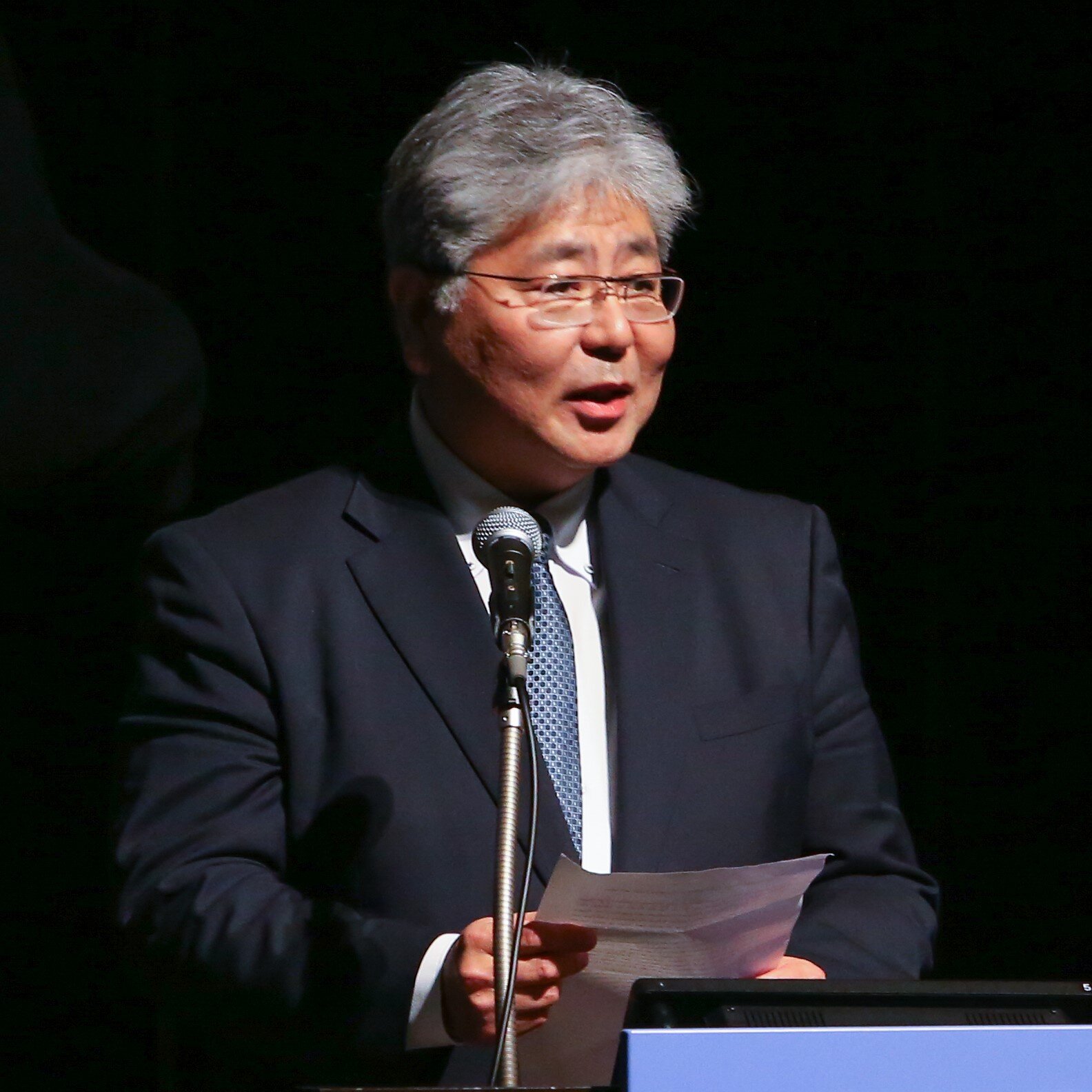
Speaking on behalf of the IATSS secretariat, Mr. Kawai expressed gratitude to all participants and contributors of the 10th Global Interactive Forum on Traffic & Safety, including keynote speakers, panelists, discussion coordinators, and workshop moderators, both in-person and online. He specifically acknowledged IATSS leadership, including President Professor Kazuhiko Takeuchi, Vice President Minoru Kato, and other key committee chairs.
He reflected on the decade-long journey of GIFTS, which has used "Traffic Culture" as its guiding theme while respecting regional variations in mobility worldwide. Mr. Kawai emphasized how traffic safety keywords must be interpreted according to each society's unique cultural, historical, economic, and social contexts, noting that the day's discussions had successfully connected scientific findings with practical policy development across different countries.
Mr. Kawai concluded by linking the symposium's insights to IATSS Vision 2024 and beyond, acknowledging the organization's founding principles from Honda Motor Company fifty years ago. He expressed confidence that through continued collaboration with global stakeholders, IATSS is advancing toward its goal of realizing an ideal mobility society.
